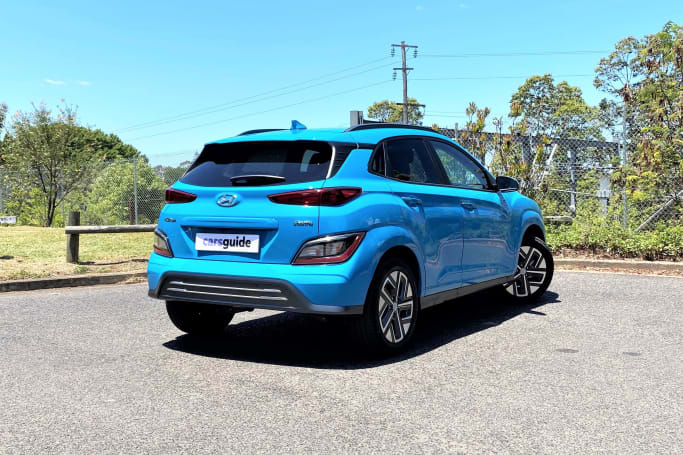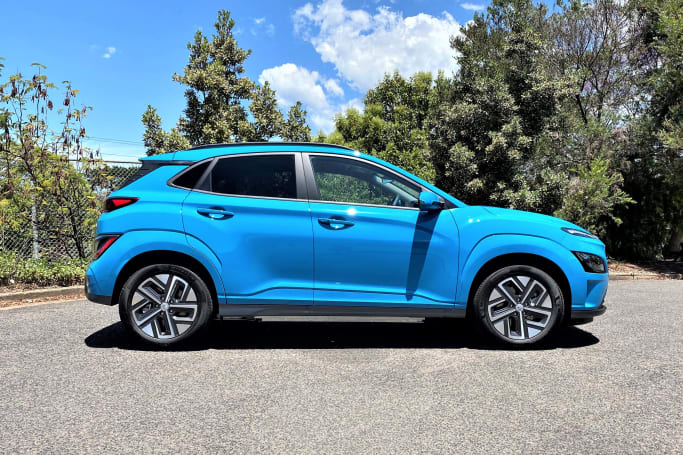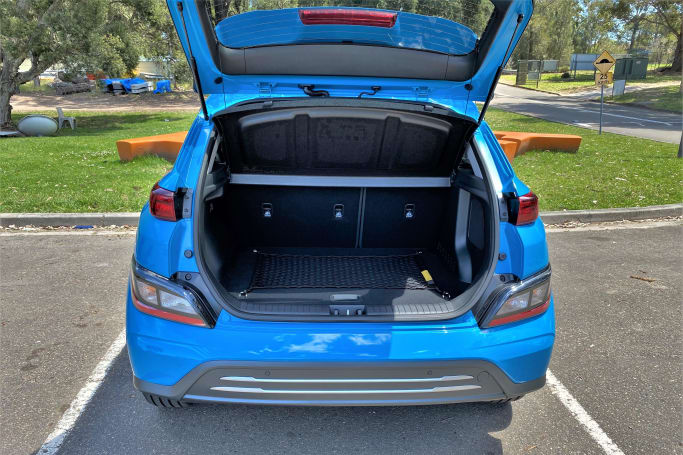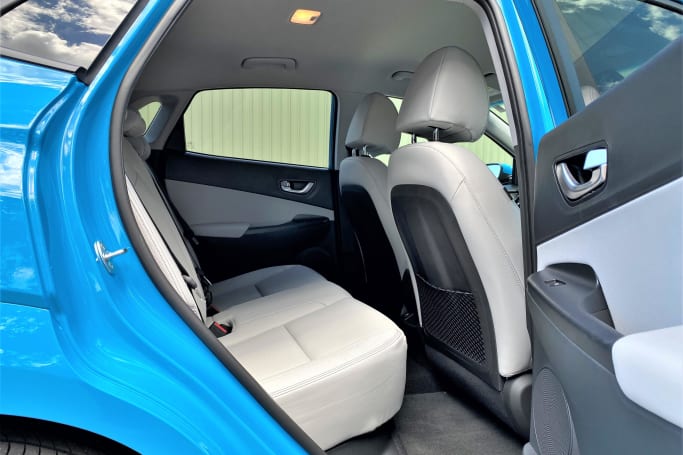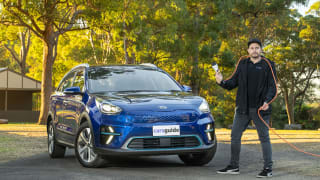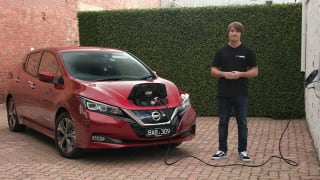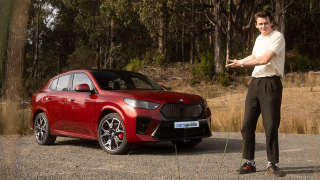The Kona Electric looks like a regular Kona wearing a face mask. By that I mean the large honeycomb grille of the petrol-powered Kona has been covered with a plastic panel the same colour as the rest of the body.
That’s because this electric Kona, like all EVs, doesn’t have an engine which needs cooling. It’s a look we’ll get used to as more EVs arrive in greater numbers, but for now it appears odd (to my eyes).
When I took the Kona EV back to Hyundai, I parked next to a petrol version and took a family photo of them so you can see the difference straight away.
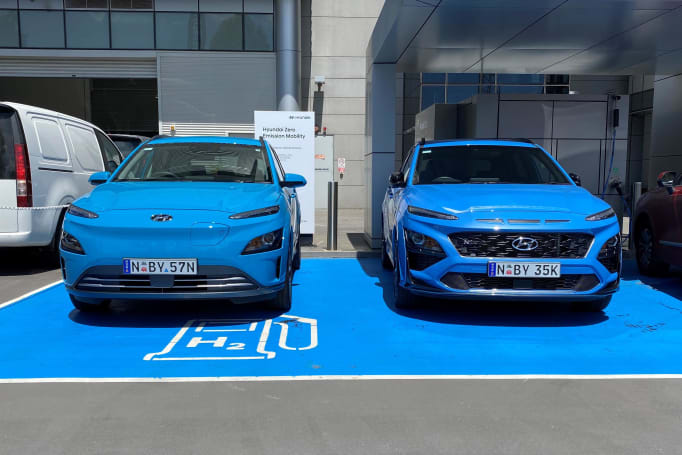
By the way, the old Kona Electric had a similar plastic mask, but with a textured pattern, not a smooth surface like this new one. That’s how you can quickly tell them apart from the outside.
Apart from the grille, the rest of the Kona Electric looks just like a petrol one, from the pumped-up wheel arches to the tailgate with its blade-like tail-lights to match the LED running lights.
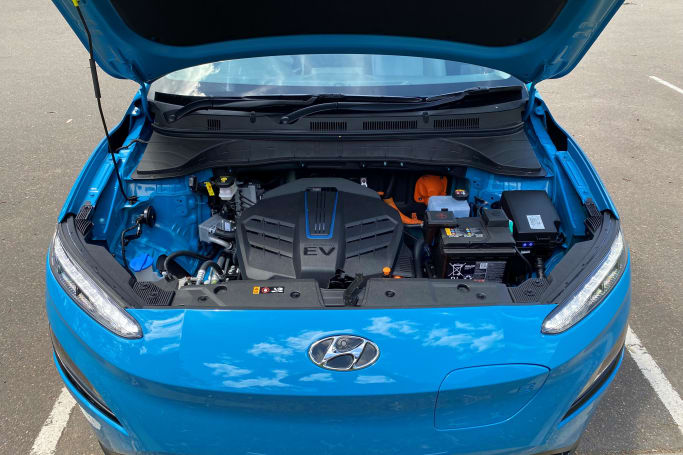
Inside, this new Kona electric has a ‘floating’ centre console with a push-button shifter, a large centre media display and a digital instrument cluster.
The cabin has a premium feel and a similar look to interiors in other, higher grade Hyundai models.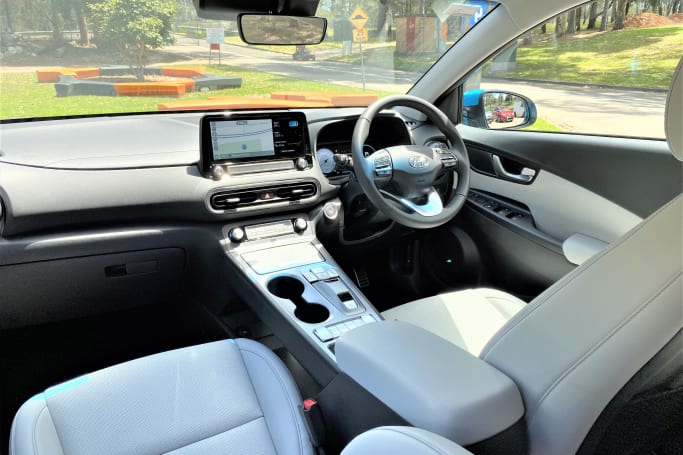
Our test car had the white leather upholstery which is an absolute no-no for families, because... chocolate, and mud, and apple juice.
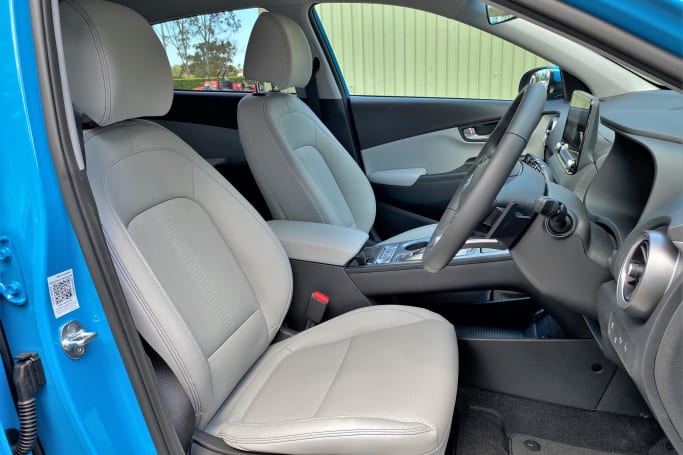
I liked the 'Surfy Blue' paint of my test Kona Electric because every car these days seems to be silver.




